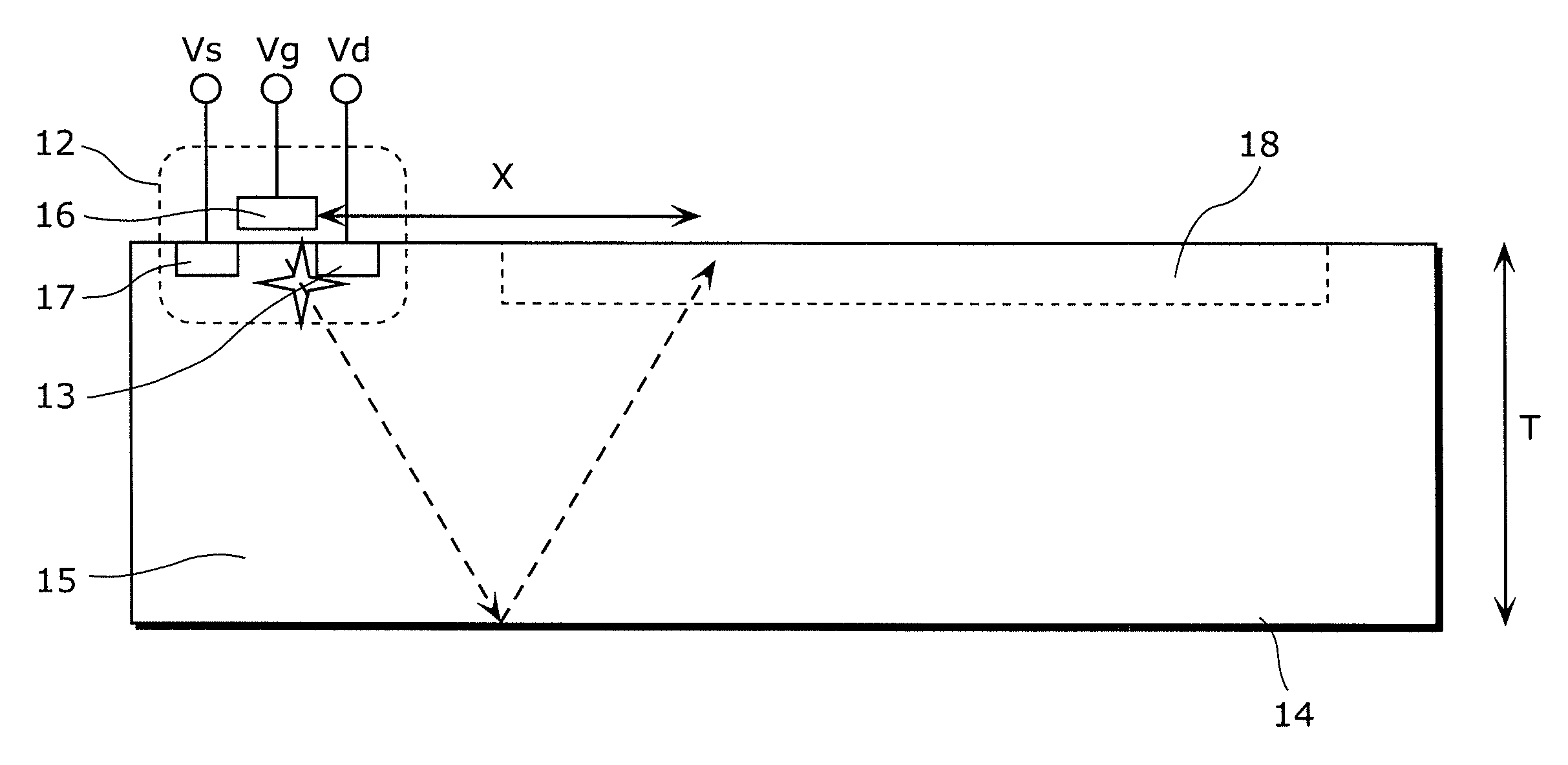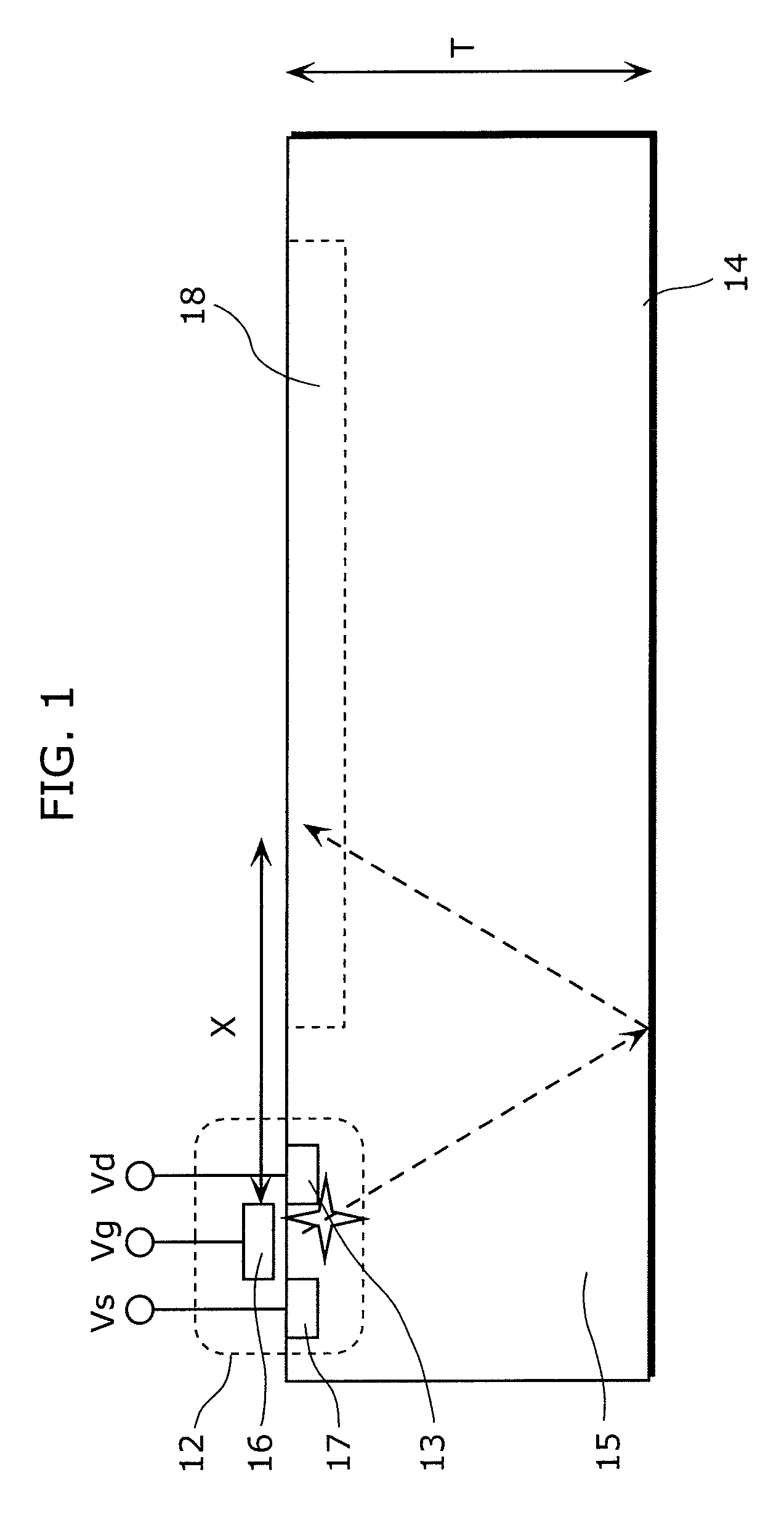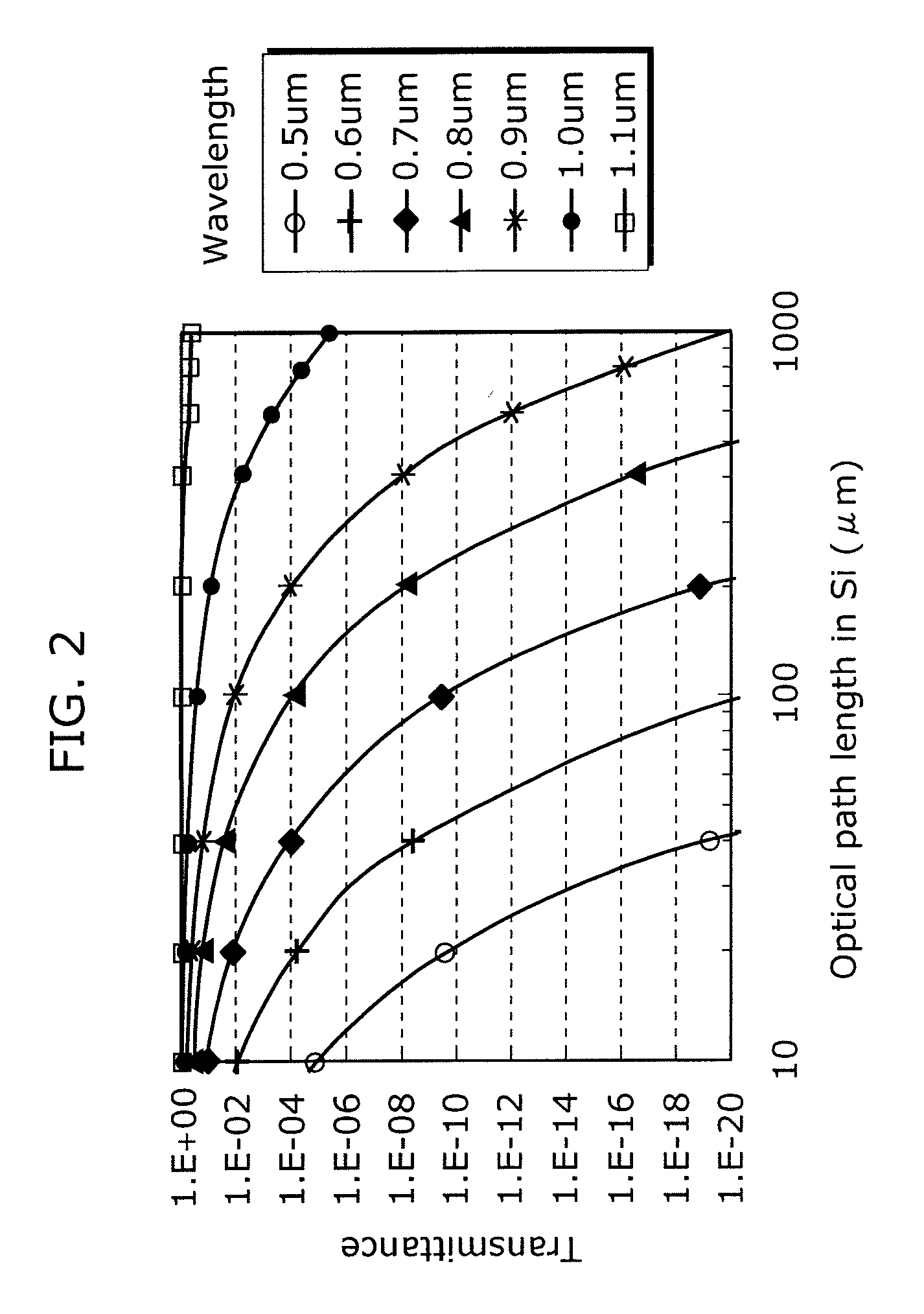Driving method for solid-state imaging device and solid-state imaging device
a solid-state imaging and driving method technology, applied in the direction of instruments, television systems, color signal processing circuits, etc., can solve the problems of not providing the technical features of substantial image quality improvement such as a dynamic range, and the dynamic range of the image obtained by subtracting the dark signals with respect, so as to improve imaging fidelity and signal processing time, reduce noise, and improve image quality
- Summary
- Abstract
- Description
- Claims
- Application Information
AI Technical Summary
Benefits of technology
Problems solved by technology
Method used
Image
Examples
embodiment 1
[0061]The following will describe a driving method for solid-state imaging device and a solid-state imaging device according to Embodiment 1 of the present invention.
[0062]FIG. 1 is a schematic sectional diagram of a solid-state image sensor included in a solid-state imaging device. It is to be noted that in order to facilitate understanding of the present invention with FIG. 1, a peripheral circuitry (including one or more peripheral circuits) of the solid-state image sensor is represented by a single MOS transistor. In FIG. 1, a solid-state image sensor 14 includes a semiconductor substrate 15, and a peripheral circuitry 12 and an imaging region 18 that are formed on the semiconductor substrate 15; and the peripheral circuitry 12 includes a drain 13, a gate 16, and a source 17. The semiconductor substrate 15 is usually made of Si single crystal. Furthermore, T represents a thickness of the semiconductor substrate 15, and x represents a distance from the drain 13 to photodiodes. A ...
embodiment 2
[0091]The following will describe a driving method for solid-state imaging device according to Embodiment 2 of the present invention with reference to the drawings.
[0092]FIG. 10 is a diagram showing the driving method for solid-state imaging device according to the present invention.
[0093]The present embodiment provides a different driving method for use in the solid-state imaging device shown in FIG. 6 in Embodiment 1.
[0094]In the driving method for solid-state imaging device according to the present embodiment, a dark output image due to an operation of a peripheral circuitry is extracted and stored in a solid-state imaging device in advance according to the following procedure. In other words, the procedure is performed as follows. The peripheral circuitry is first activated as usual. Next, a shutter is closed (S101), and a first dark output image is obtained through signal accumulation for a certain period in a light-shielded state (S102). The peripheral circuitry is subsequentl...
embodiment 3
[0103]The following will describe a driving method for solid-state imaging device and a solid-state imaging device according to Embodiment 3 of the present invention with reference to the drawings.
[0104]FIG. 13 is a diagram showing the solid-state imaging device according to the present embodiment. The solid-state imaging device according to the present embodiment differs from the solid-state imaging device according to Embodiment 1 shown in FIG. 6 in including a temperature sensor 70 and an imaging mode control device 71.
[0105]FIG. 14 is a diagram showing a conventional driving method for solid-state imaging device. This conventional method (S141 to S146) in which a peripheral circuitry is not suspended and dark outputs are not compensated is called an imaging mode 4. Since the peripheral circuitry is not switched on and off in this mode, the mode is suitable for continuous imaging or a condition where the dark outputs are not high.
[0106]FIG. 15 is a diagram showing the driving met...
PUM
 Login to View More
Login to View More Abstract
Description
Claims
Application Information
 Login to View More
Login to View More - R&D
- Intellectual Property
- Life Sciences
- Materials
- Tech Scout
- Unparalleled Data Quality
- Higher Quality Content
- 60% Fewer Hallucinations
Browse by: Latest US Patents, China's latest patents, Technical Efficacy Thesaurus, Application Domain, Technology Topic, Popular Technical Reports.
© 2025 PatSnap. All rights reserved.Legal|Privacy policy|Modern Slavery Act Transparency Statement|Sitemap|About US| Contact US: help@patsnap.com



